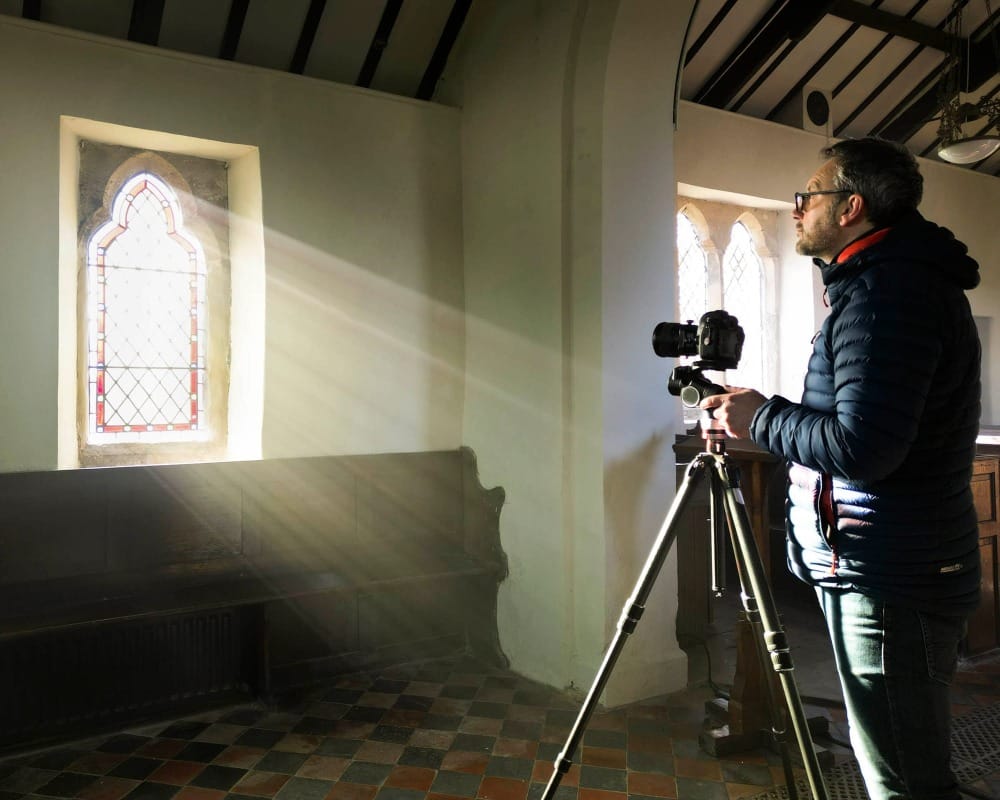
COMPACT EDITION!
Thanks for coming along
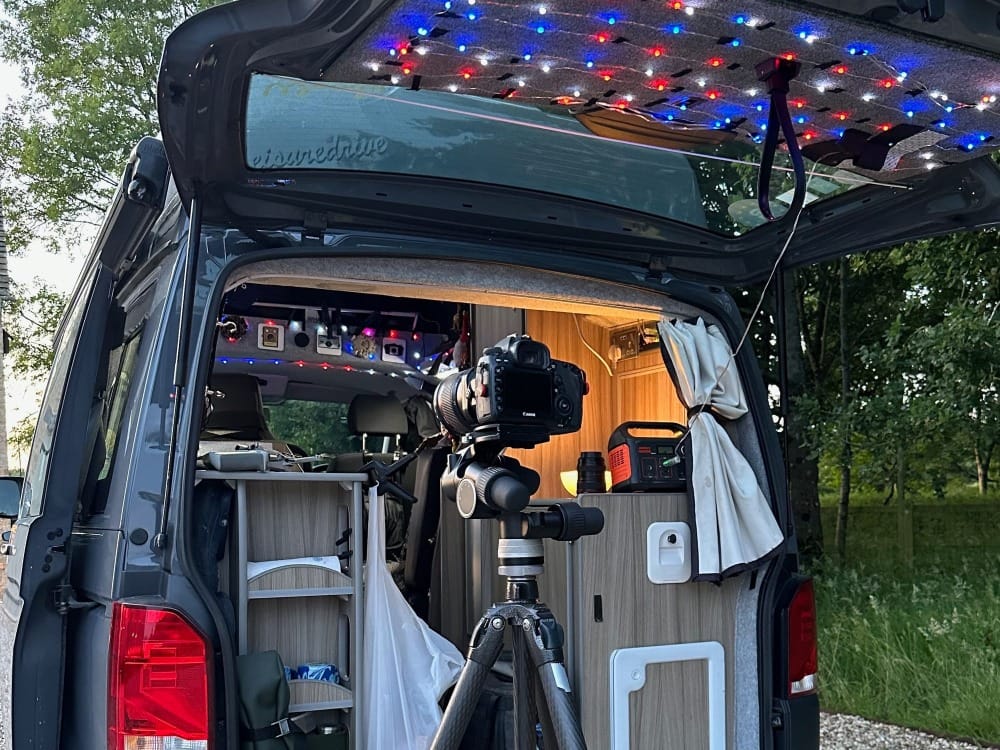
⚡️ View the latest digest and the full archive here.
📐 My Goals ℹ️ Donations Page & Status 📸 MPP Status 🛍️Shop
'What each of us must do is cleave to what we find most beautiful in our human heritage - and pass it on……And to pass these precious fragments on is our mission. '
Michael Ventura, The Age of Endarkenment
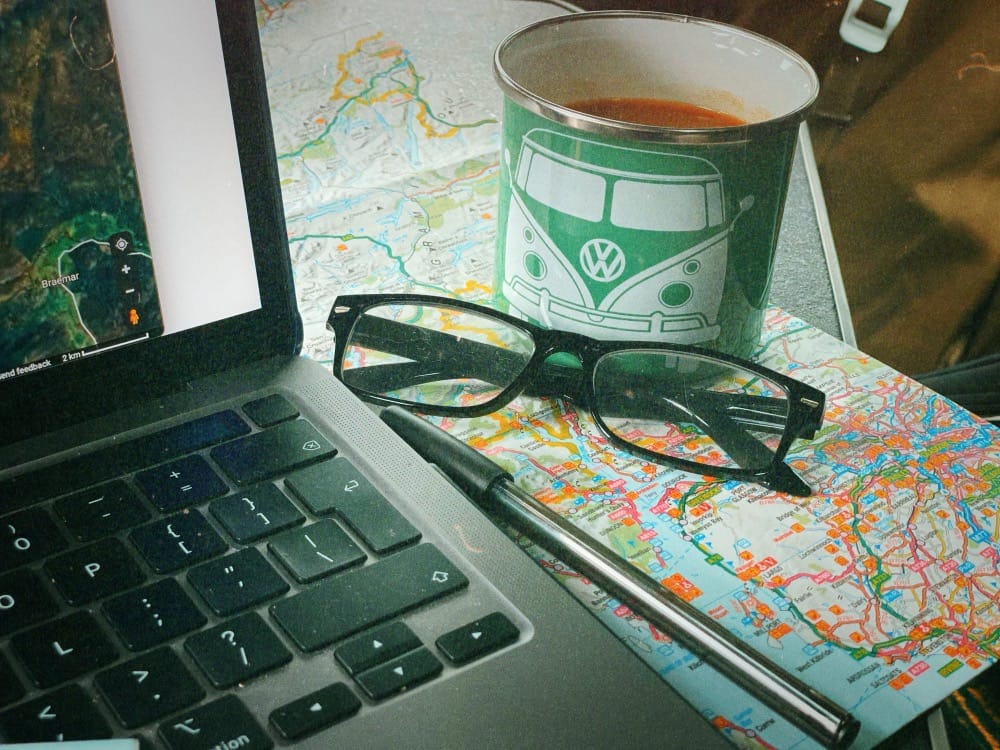
Every week I sit down in front of my MacBook, stare at the blank page of my Genius Loci Digest draft, and tell myself I’m not good enough to be doing this. And every week, I pull myself away from the screen and think about the places that have confounded this deeply rooted view of myself. Then I reconnect with the golden thread of a more confident self - and somehow, I patch my way back to the screen, and begin.
My golden thread is made up of a weave of places, landscapes, buildings and people that seem to halt the world for a moment and anchor me to something deeper. These places have helped me weather the tremors and aftershocks of a breakdown I experienced many years ago. What remains are shadows - bouts of anxiety, a lack of worth, a gnawing imposter syndrome.
In the aftermath of breakdown, I set out on a journey - not to find something grand or noble, but to simply understand myself better. I thought the journey had reached its end when I asked myself, “What do you really want?” and answered, “I want to be a photographer of old buildings.”
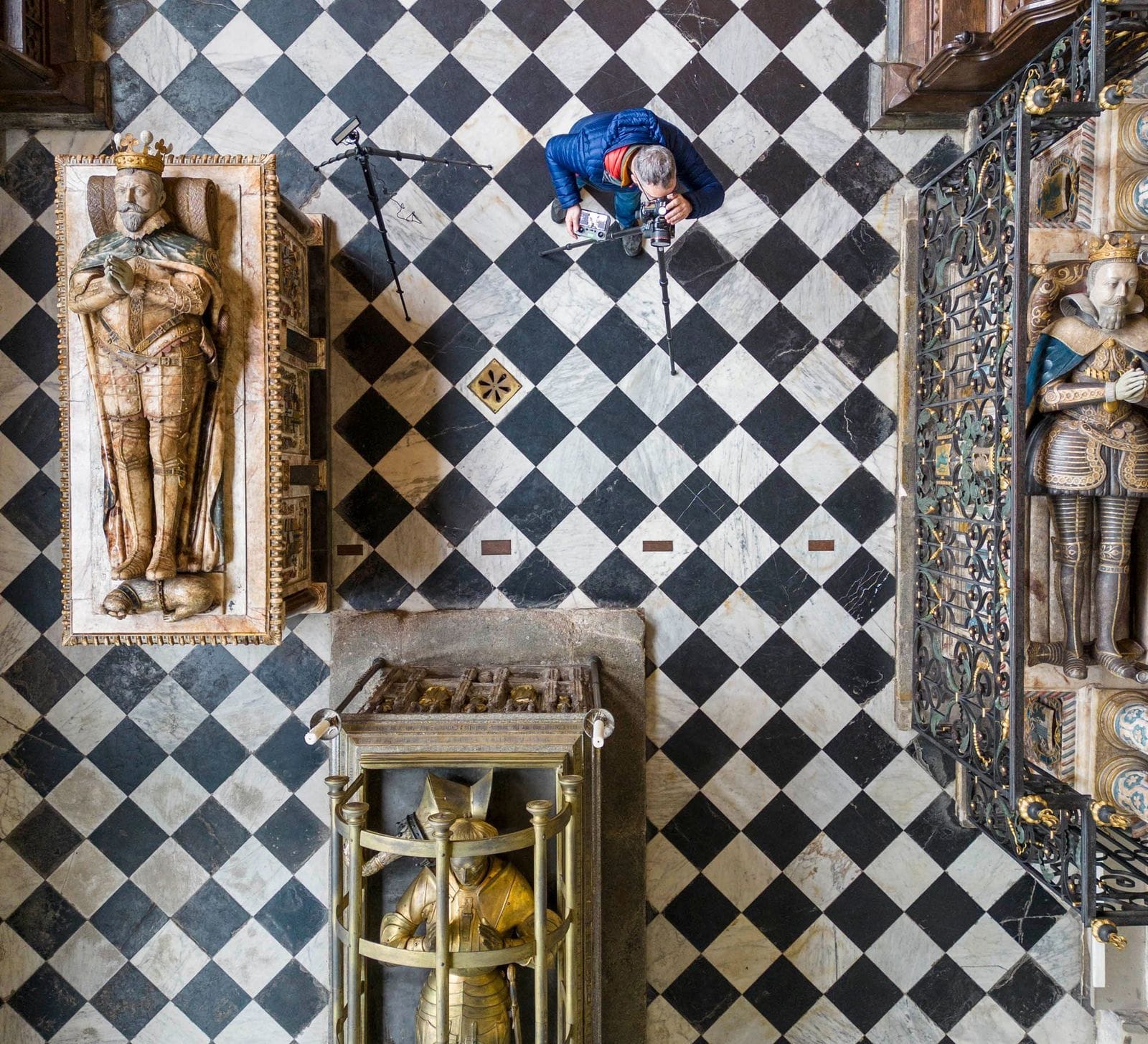
That led to a complete change of career. But the journey didn’t end there. That answer became the beginning. The photographer also became a writer, and then an artist - although it is difficult to say that, never mind write it. Over time, this path has turned into a kind of puzzle, where each place I visit is a piece that shifts how I see myself - helping me understand the nuances of what it means to be human.
At Jowkin Wood, I found a balm in nature’s complexity; at Bunbury, a tether to the past through craftsmanship; and at the Marble Church, the awe of sunrise felt like a spiritual tide.
Now, I find myself at another piece of the puzzle. I’m caught in the blue hour before twilight. The roads are dark, the landscape unfamiliar. Yet on the horizon, there’s a faint glimmer.

I’m in Northumberland, nudging up against the Scottish border - a land marked by the tension of old boundaries. Like twilight, borderlands exist in the in-between. This liminality is echoed in the architecture here. Stone farmhouses are often fused with pele towers - defensive structures where people once retreated during raids. These towers stand like architectural exclamation marks.
Stop! No entry! Stay away! they seem to cry.
But my destination is quieter - half an exclamation, half in parenthesis: a Roman Catholic chapel at Biddlestone, built atop a medieval pele tower. It clings to the moors like a fly on a billiard table. Through centuries of religious suppression, this area harboured, in one form or another, a place of clandestine worship, made invisible by its isolation.
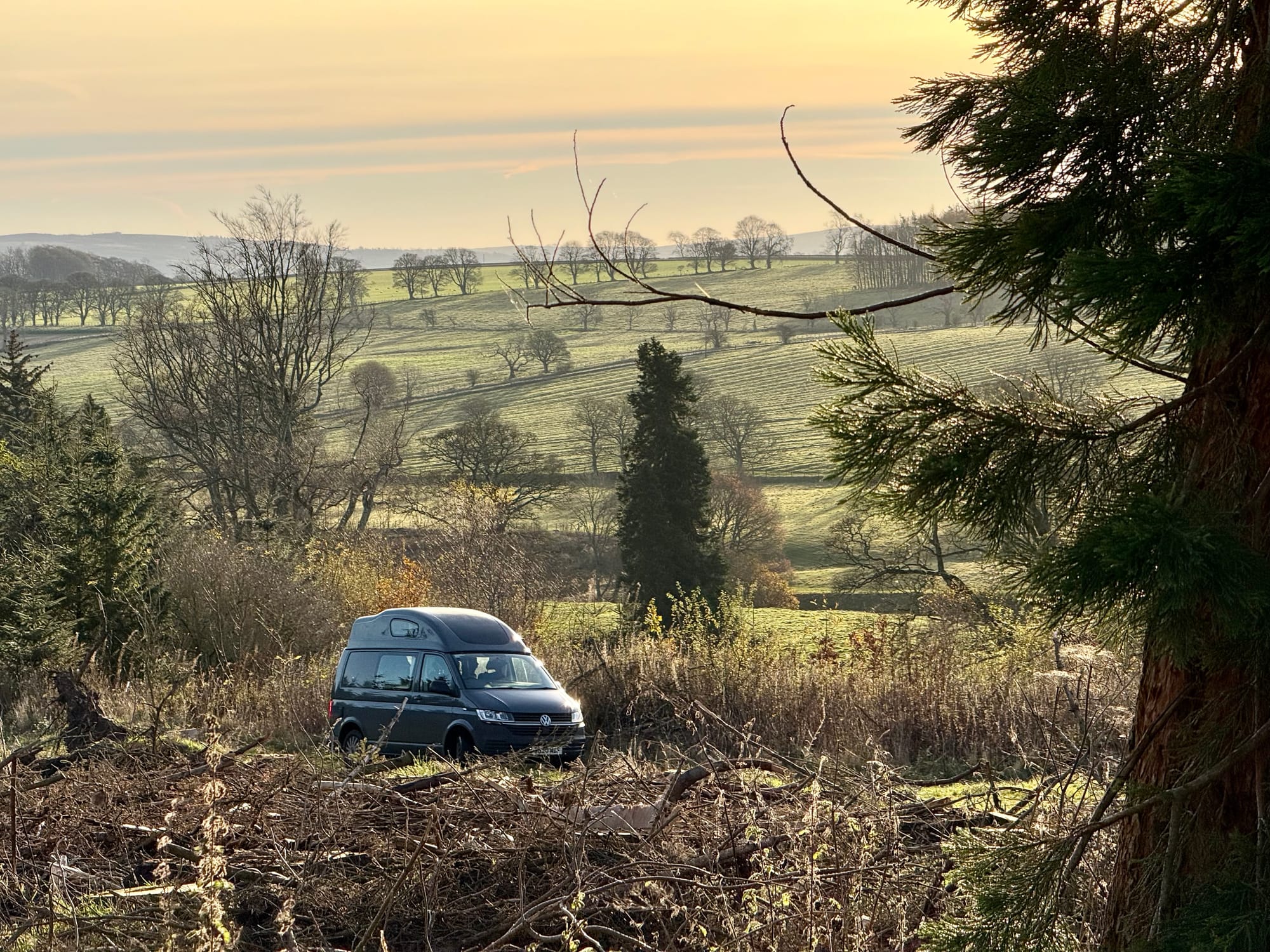
Before I get to the chapel, I must negotiate thinning roads that quickly turn into gravel lanes and then deep rutted tracks. The wedge of light that beams from Woody shows a right turn into what looks like an access way for the chapel. I edge forward in second gear, the van’s underbelly brushing against grassy ridges. It doesn’t feel right - too rough for an entrance - so I pull over and sit quietly in the back, poring over the map. No obvious alternative presents itself, but I can just make out the chapel’s silhouette to the north, framed against a wall of spruce.
I decide to don torch and walk the route, trace the path from the chapel and seek 0ut the entry point.
All the time the light is burgeoning to the east.
I find the gateway further south, hidden by a mass of trees. I return to the van and decide to make breakfast. Morning light spills into the clearing, revealing a landscape still recovering from a recent storm - shattered trunks and fallen branches speak of the chaos that once surged through here.

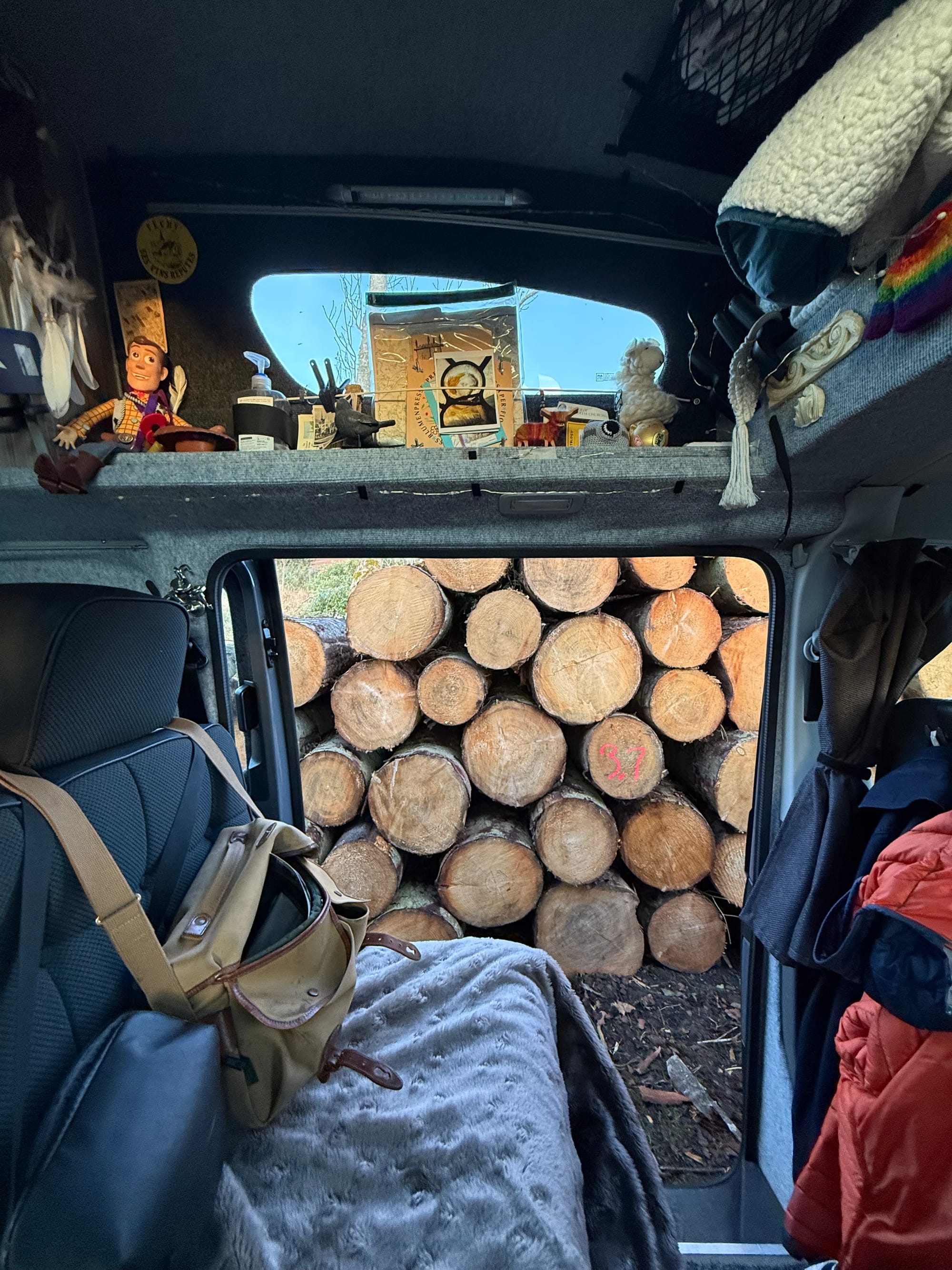
I drive back to the entry, take the track, and move slowly along a dark corridor of pine. Then, without warning, the trees dissipate, and I emerge into an expanse that completely takes my breath away.
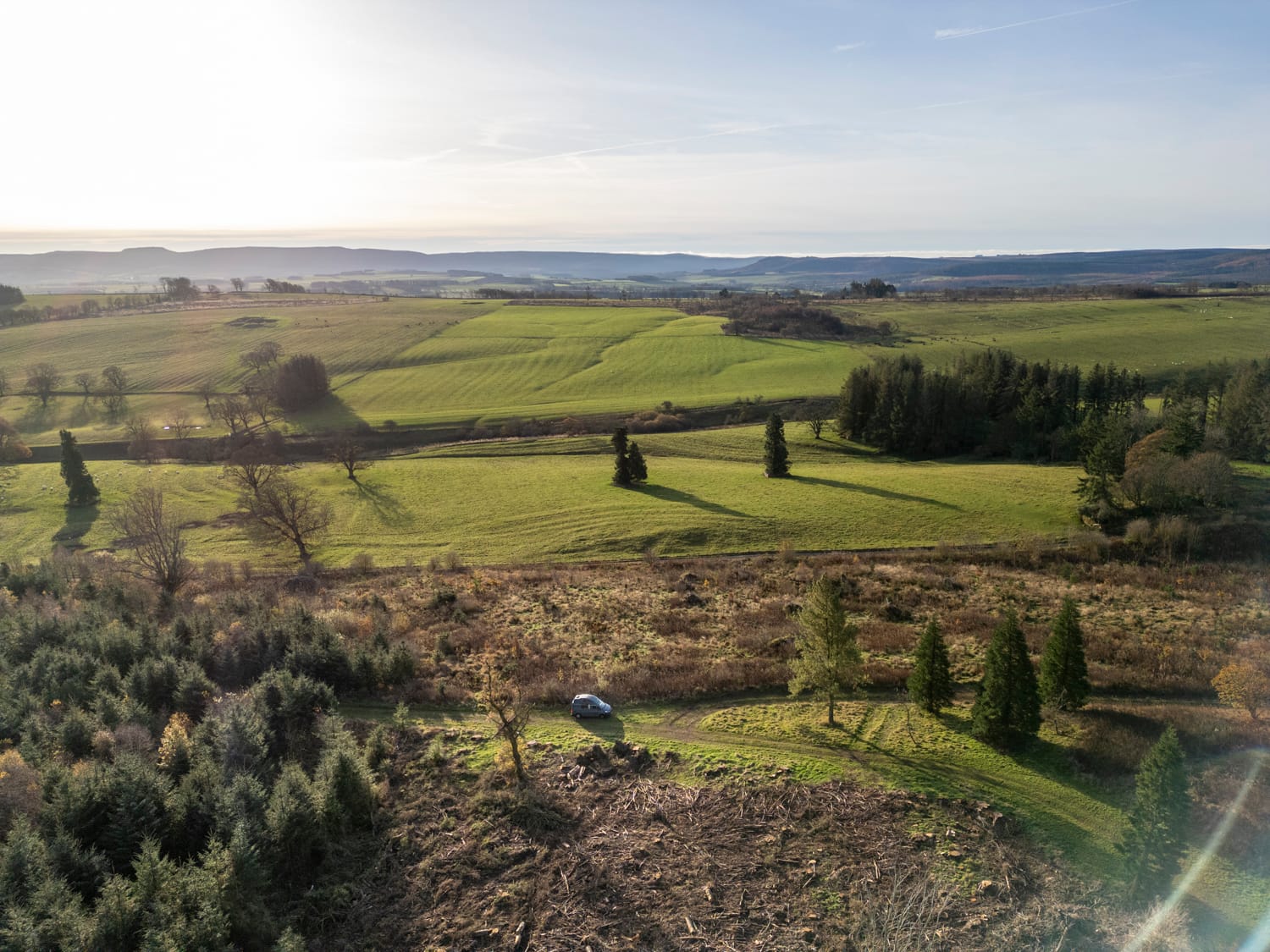
The chapel, now revealed in full daylight, stands solitary and unmoved in the sweep of vast moorland. It’s an incongruous anomaly that seems to pin earth and sky together into a landscape that invokes a strong sense of awe.
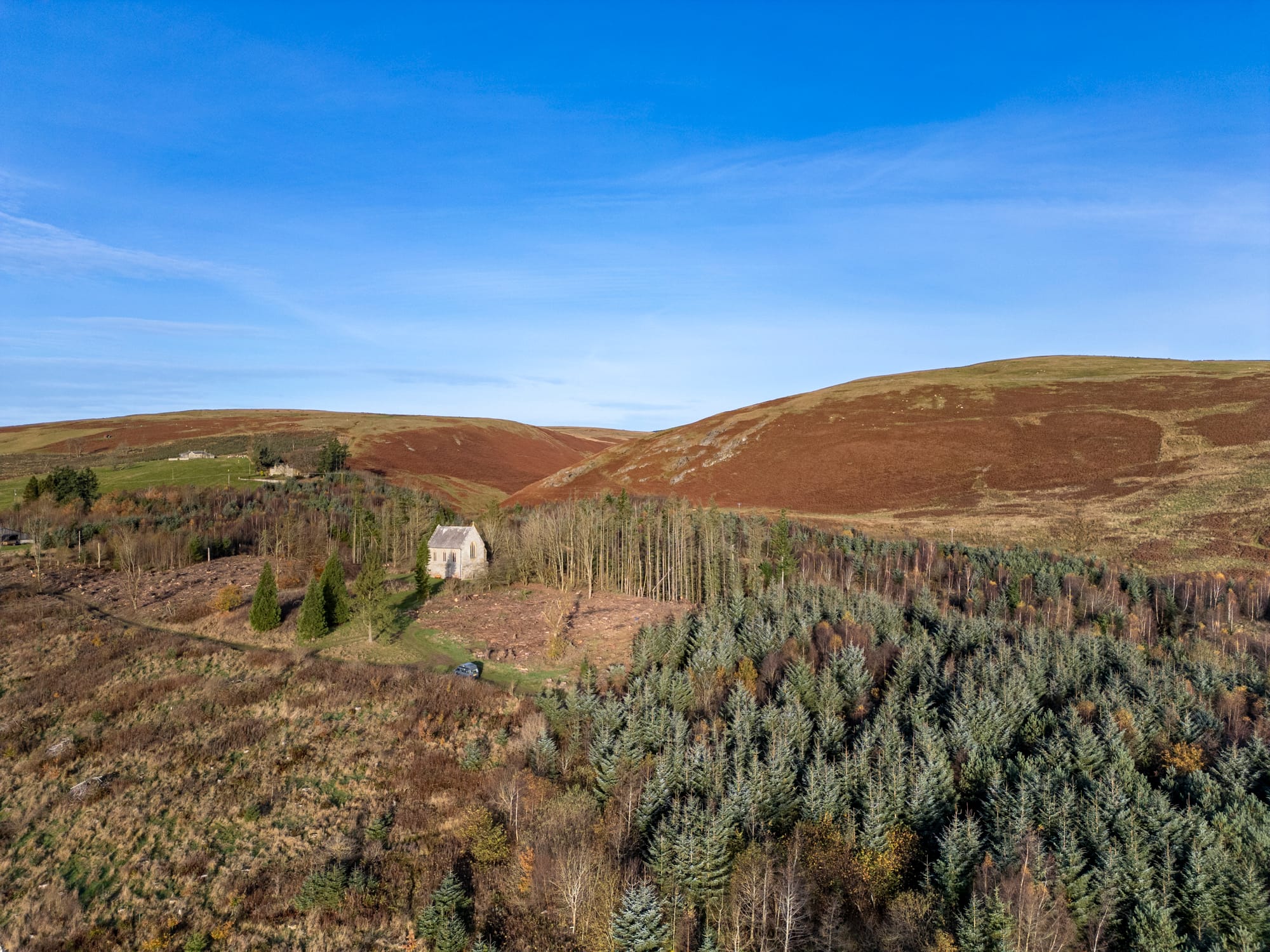
This is not the same awe that I have felt elsewhere. This is something different. It’s the “small self” in the presence of something immense. And here, in this in-between place - geographic, emotional, spiritual - I feel unanchored enough to imagine differently. To believe in the improbable. To re-ignite the golden thread.
Biddlestone stands as a kind of endangered species - one of the earth’s silent and unassuming treasures, spared by obscurity. Its vulnerability echoes that of so many things in our world: forgotten crafts, neglected traditions, disappearing sanctuaries - those subtle, irreplaceable aspects of life that rarely survive the storm of progress. And yet, here it is.

And for me, its story carries more than survival. It tells me that even in the harshest environments - times that sway back and forth with constant change - that something enduring remains, something worth holding onto.
In the low morning sun, this humble chapel - a stone speck - throws its shadow deep into the valley. A survivor in a harsh land, a flicker of continuity through centuries. What this building says is that isolation and vulnerability aren’t weaknesses - they’re the very things that make endurance possible.
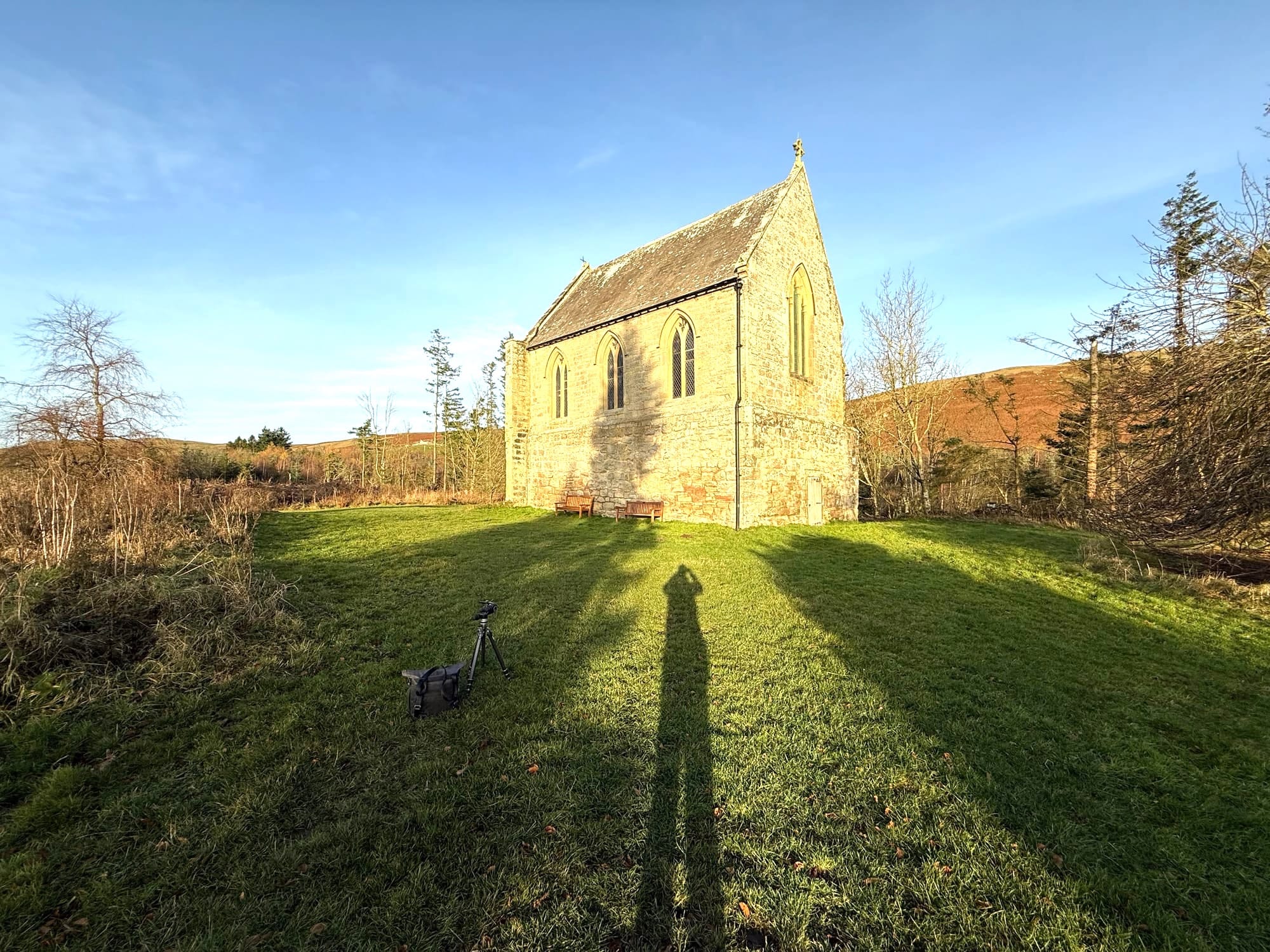
Despite the epic scale of the moorland, it is the smallest thing - a chapel - that animates the landscape.
And then, remarkably, I find something within the medieval base of the pele tower - a WWII Anderson shelter embraced by the ancient walls. Another statement of survival in times of hardship. To think that this remote community thought to shelter within a shelter. This folding in and repetition of abode and sanctuary carries a message of hope that I recognise: that no matter how insignificant we might feel, we can endure, make an impact, even illuminate. Through this building this story is repeated over and over again.
This building is a metaphor in stone – one that speaks of sanctuary, survival, and hope in the bleakest of environments.
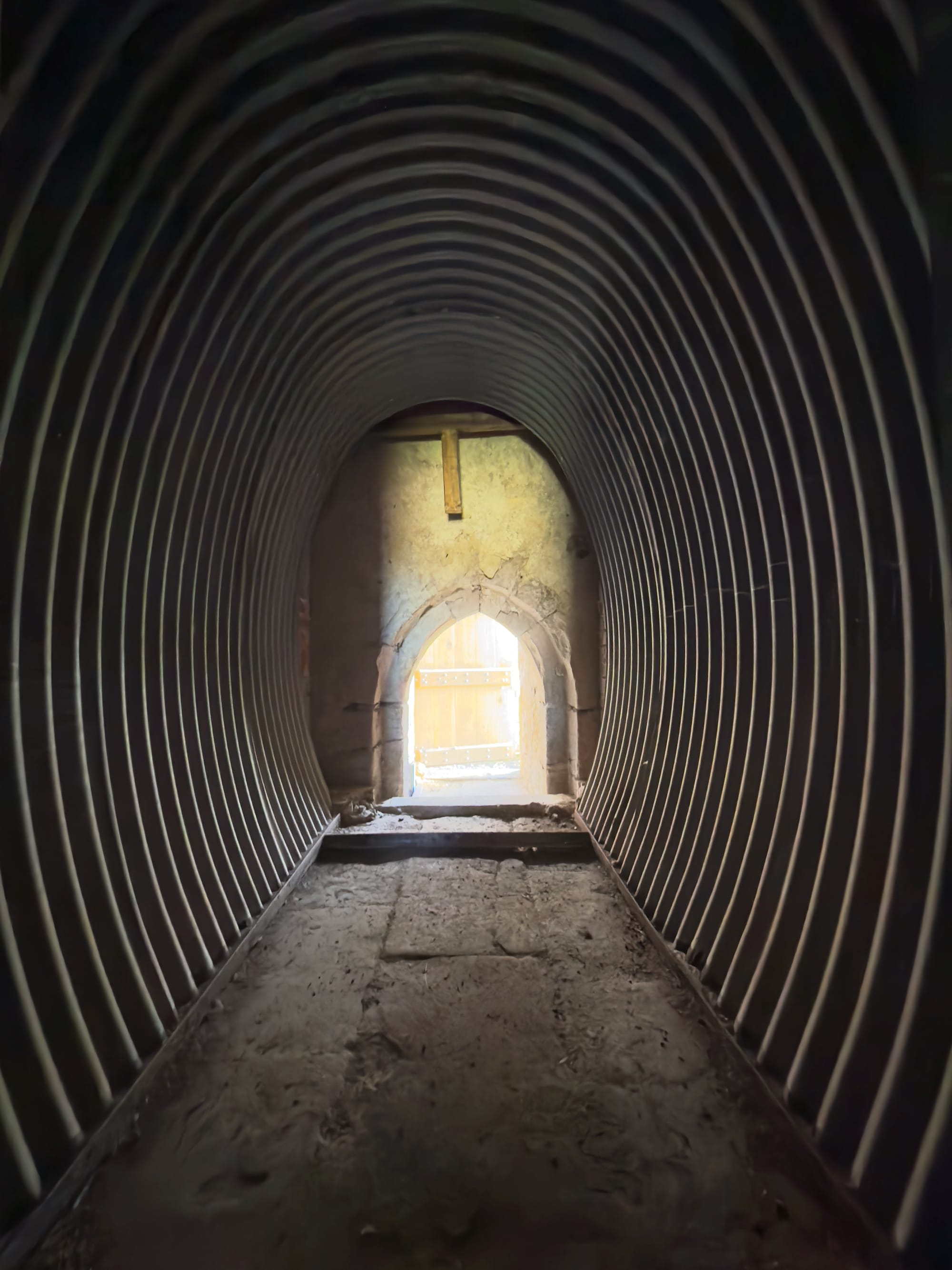
“Hope is not a lottery ticket you can sit on the sofa and clutch, feeling lucky.
It is an axe you break down doors with in an emergency.
Hope should shove you out the door, because it will take everything you have to steer the future away from endless war, from the annihilation of the earth’s treasures and the grinding down of the poor and marginal...
To hope is to give yourself to the future – and that commitment to the future is what makes the present inhabitable.”
— Rebecca Solnit
Solnit’s words remind me that the golden thread I follow – this weaving of places, people, and moments – is not something delicate to be preserved behind glass. It is something to be worked, strengthened, and drawn taut through the warp and weft of this Digest. It matters – and I must remember that the next time I sit before my MacBook.
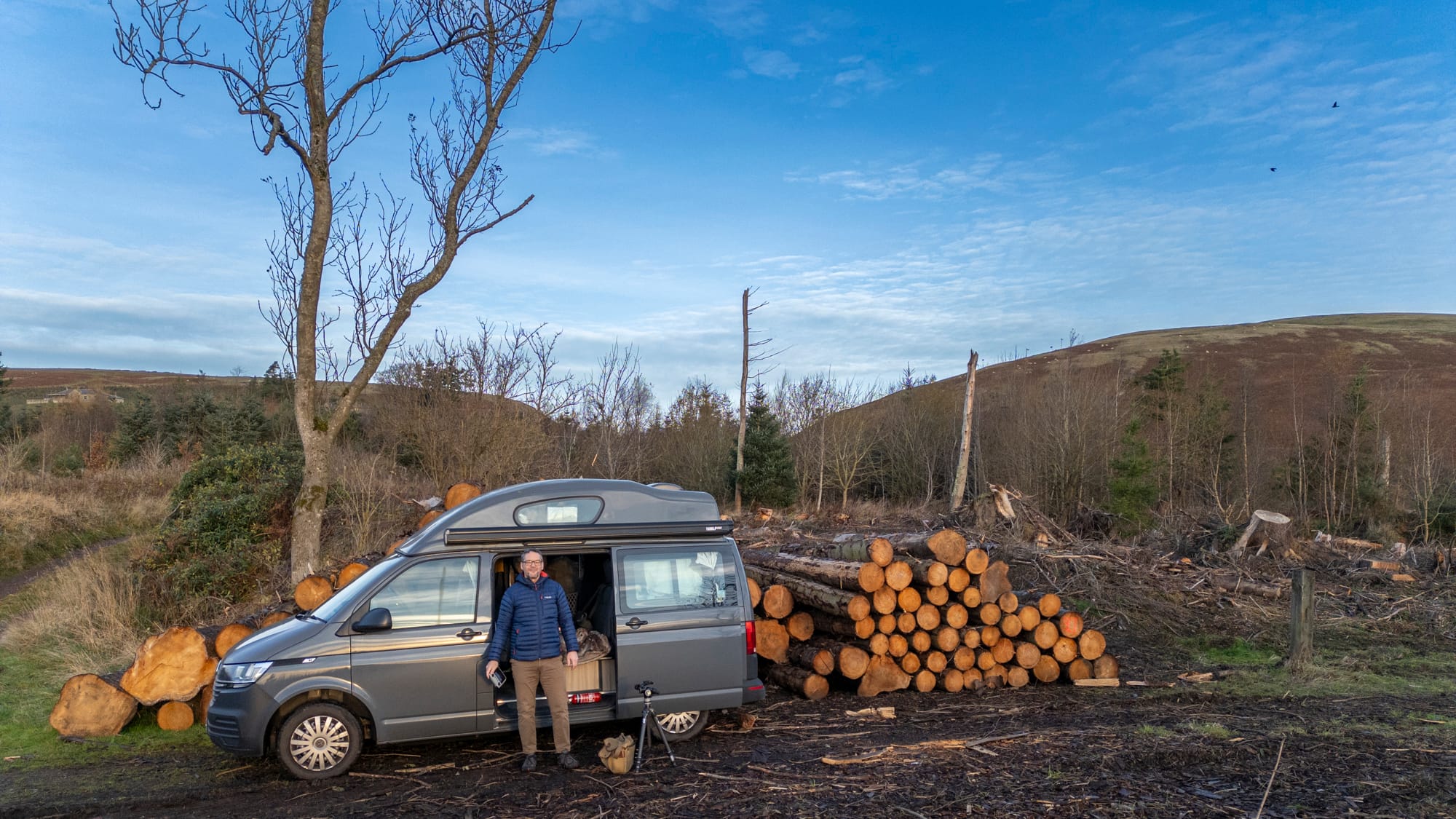
Members can see a lovely aerial video (and a bit of the interior) of Biddlestone Chapel here:
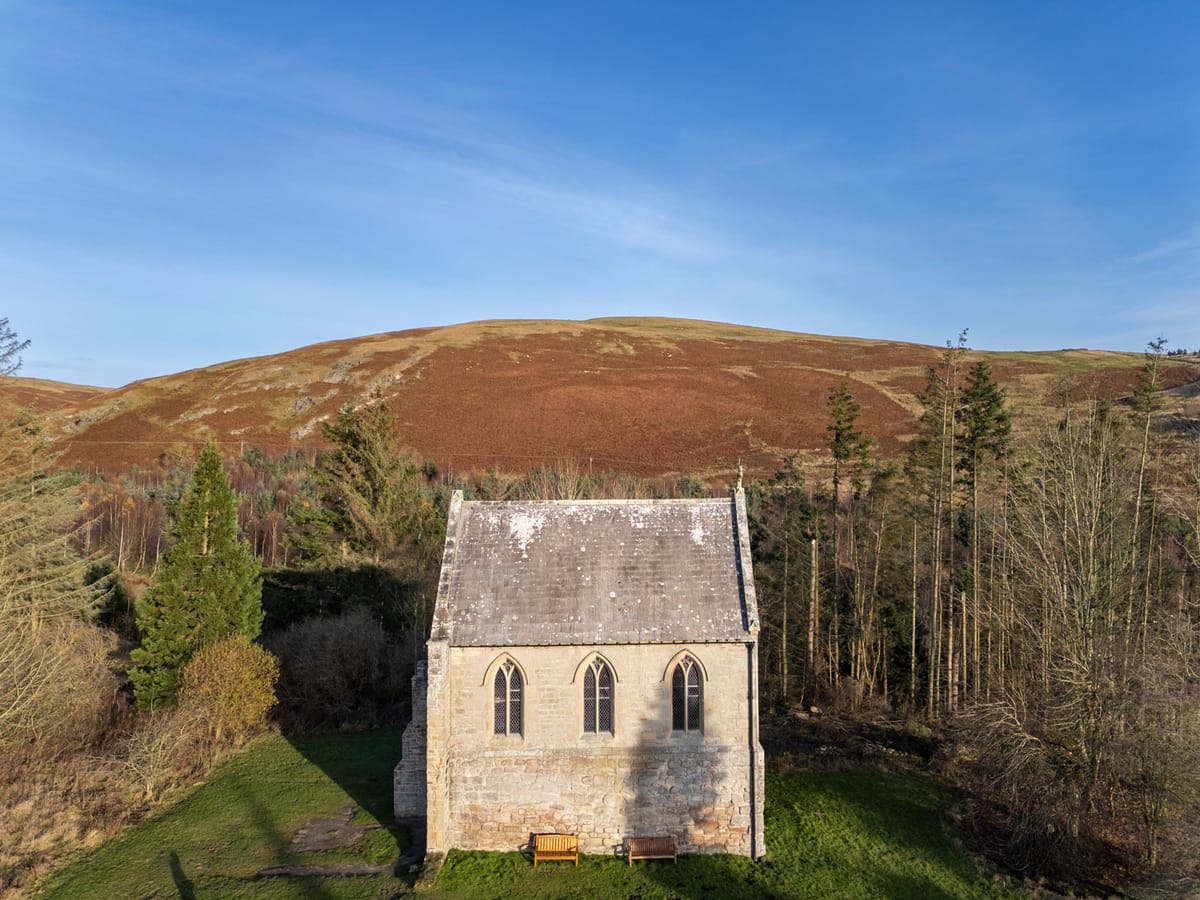
📸🏛🚐🖌️🎨 If this story resonated with you, please consider becoming a member. Your support helps me continue tracing the golden thread—through writing, photography, and place. Together, we can nurture the overlooked, illuminate the quiet, and cultivate hope in unexpected corners. Small things endure. Let’s help them shine.
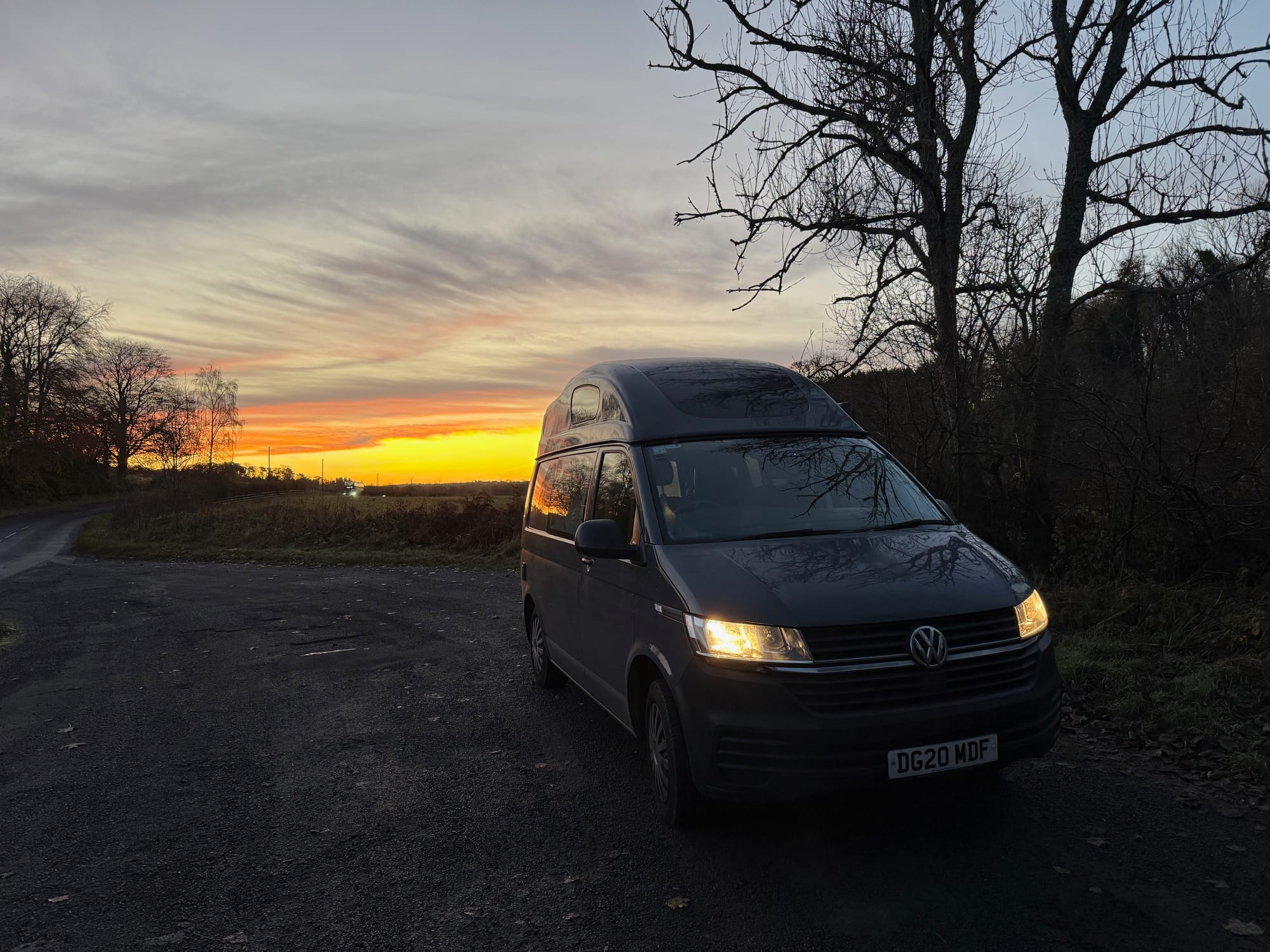
Biddlestone Chapel
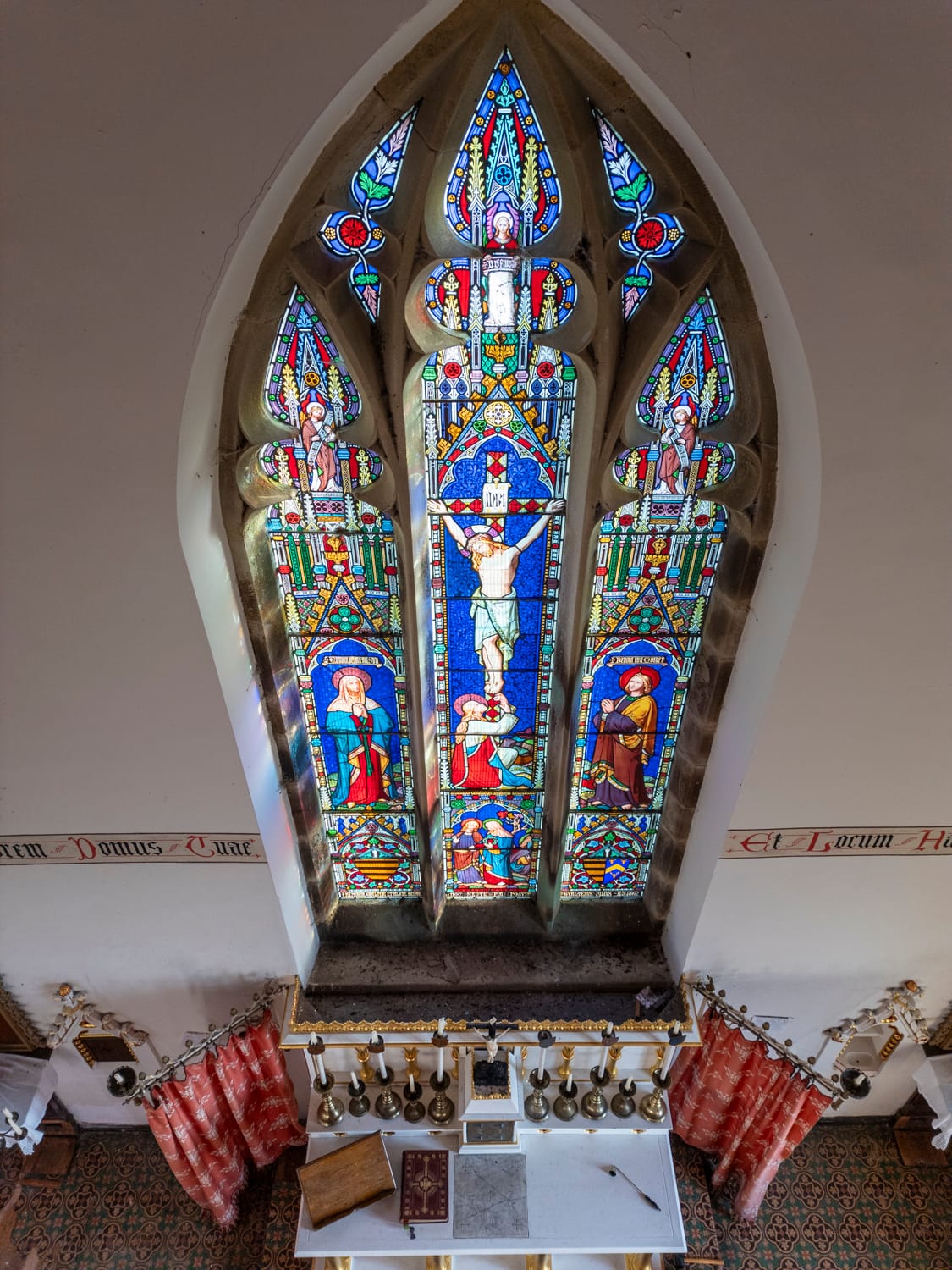
Biddlestone Chapel was once attached to Biddlestone Hall which was demolished in 1960. The chapel belonged to the Selby family and was constructed on the site of the medieval pele tower in 1820.
The little village of Rothbury is nearby for refresments.
Biddlestone Chapel is currently closed but talks are undeway to continue the stewardship of the chapel.
You can, however visit the exterior by walking from the roadside. Park besides the gateway (but don't block it) to the grass track that leads through the trees.
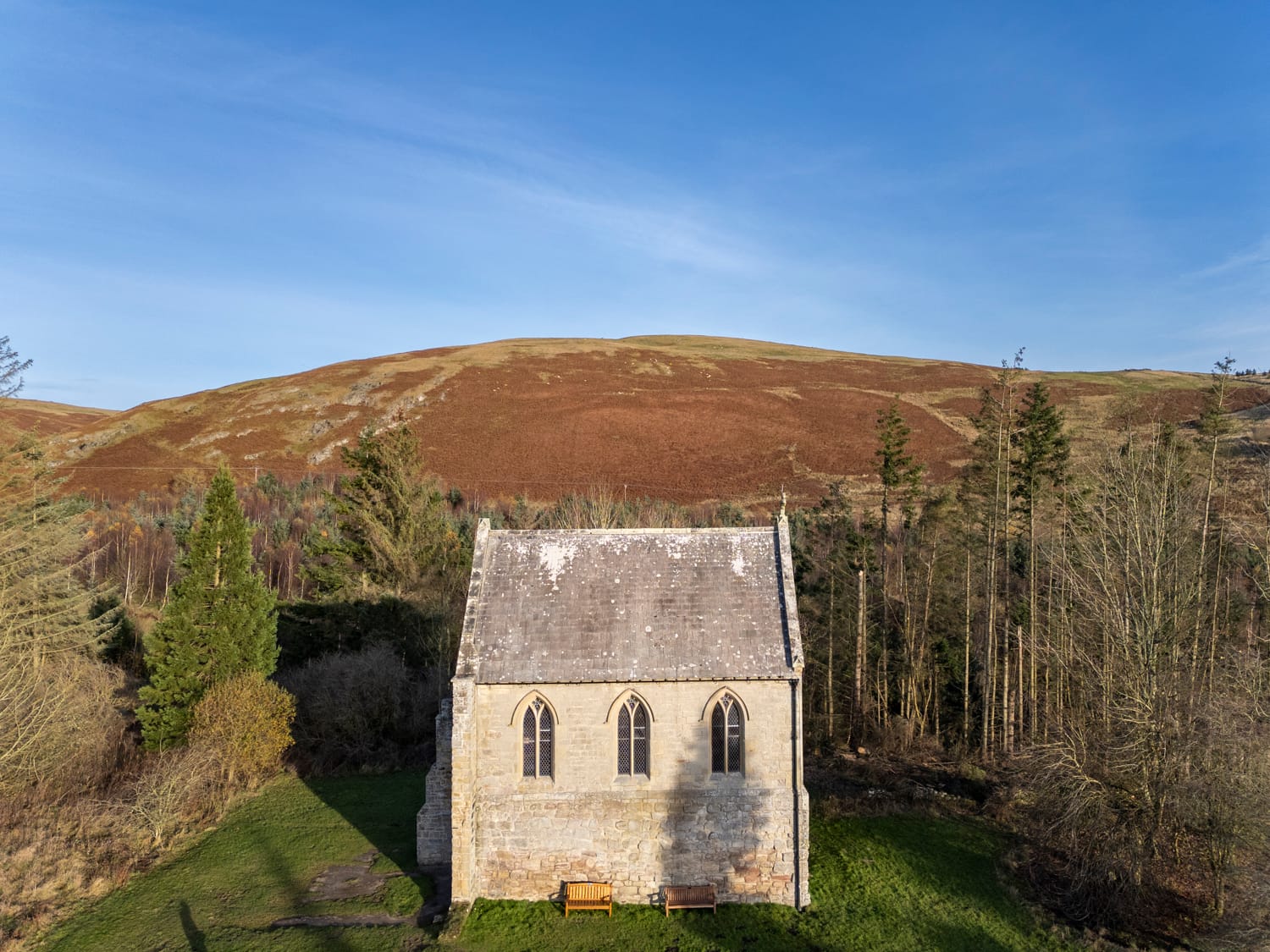
FRIENDS OF FRIENDLESS CHURCHES.
Friends of Friendless Churches look after places like Biddlestone Chapel. You can check out their website below:
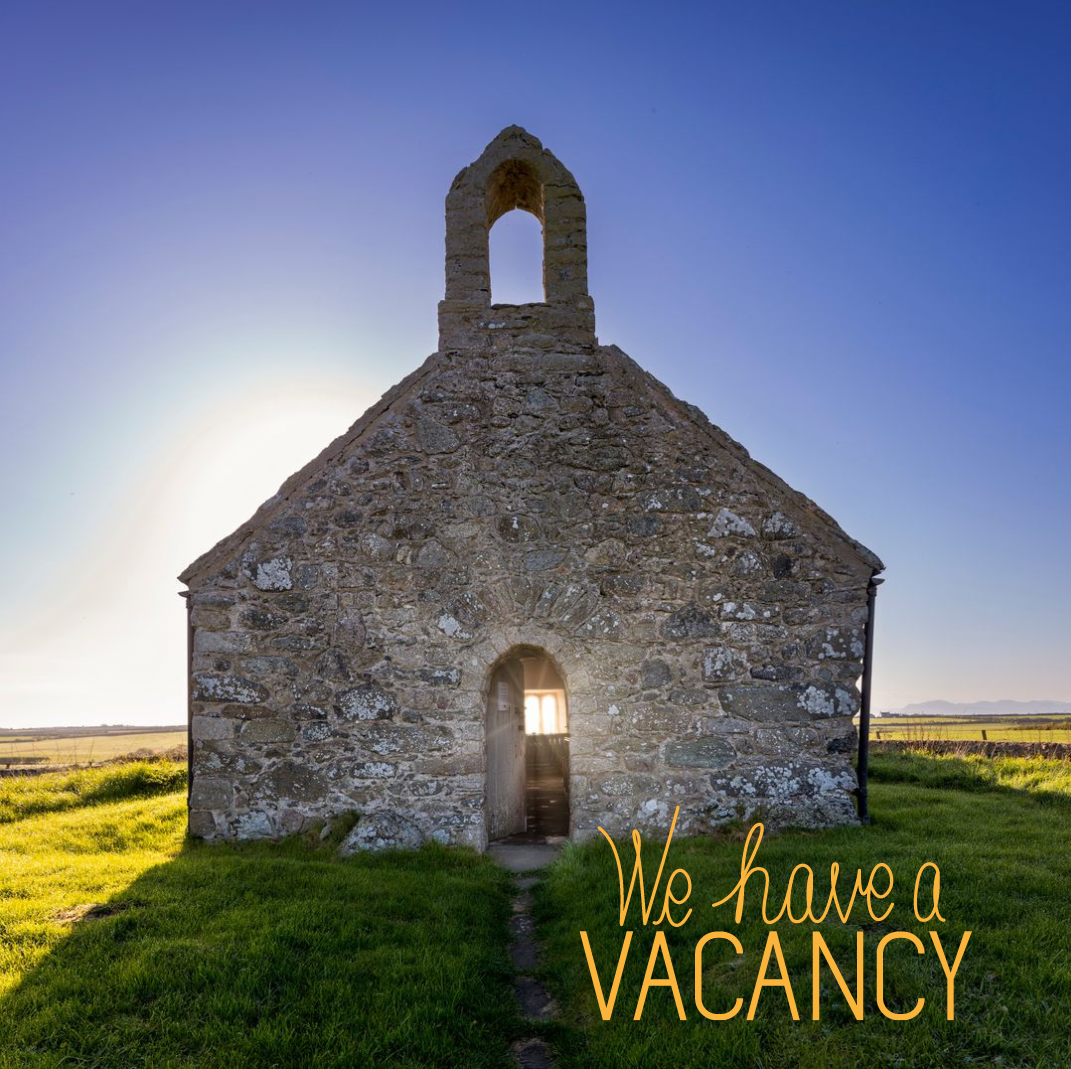
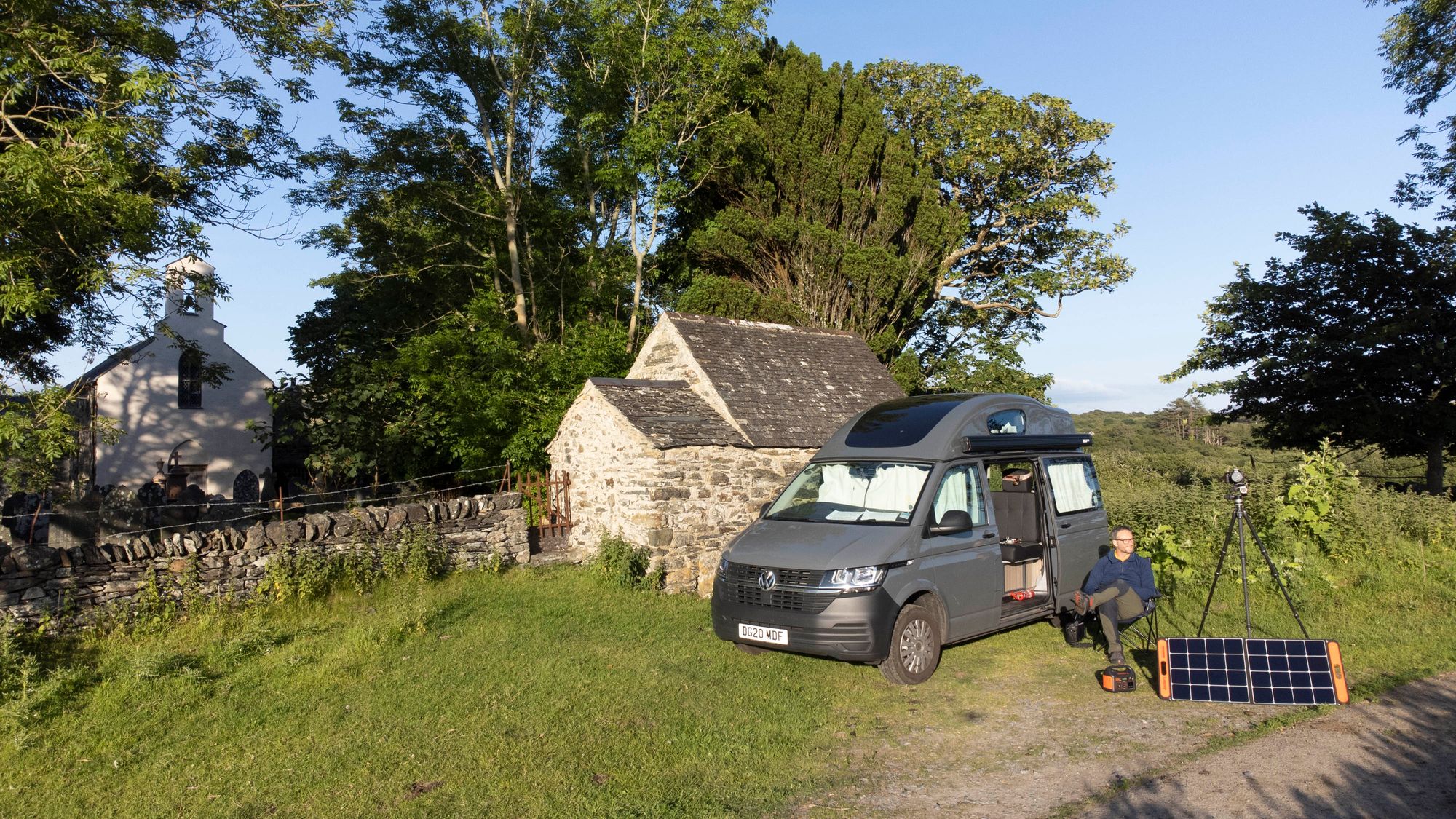
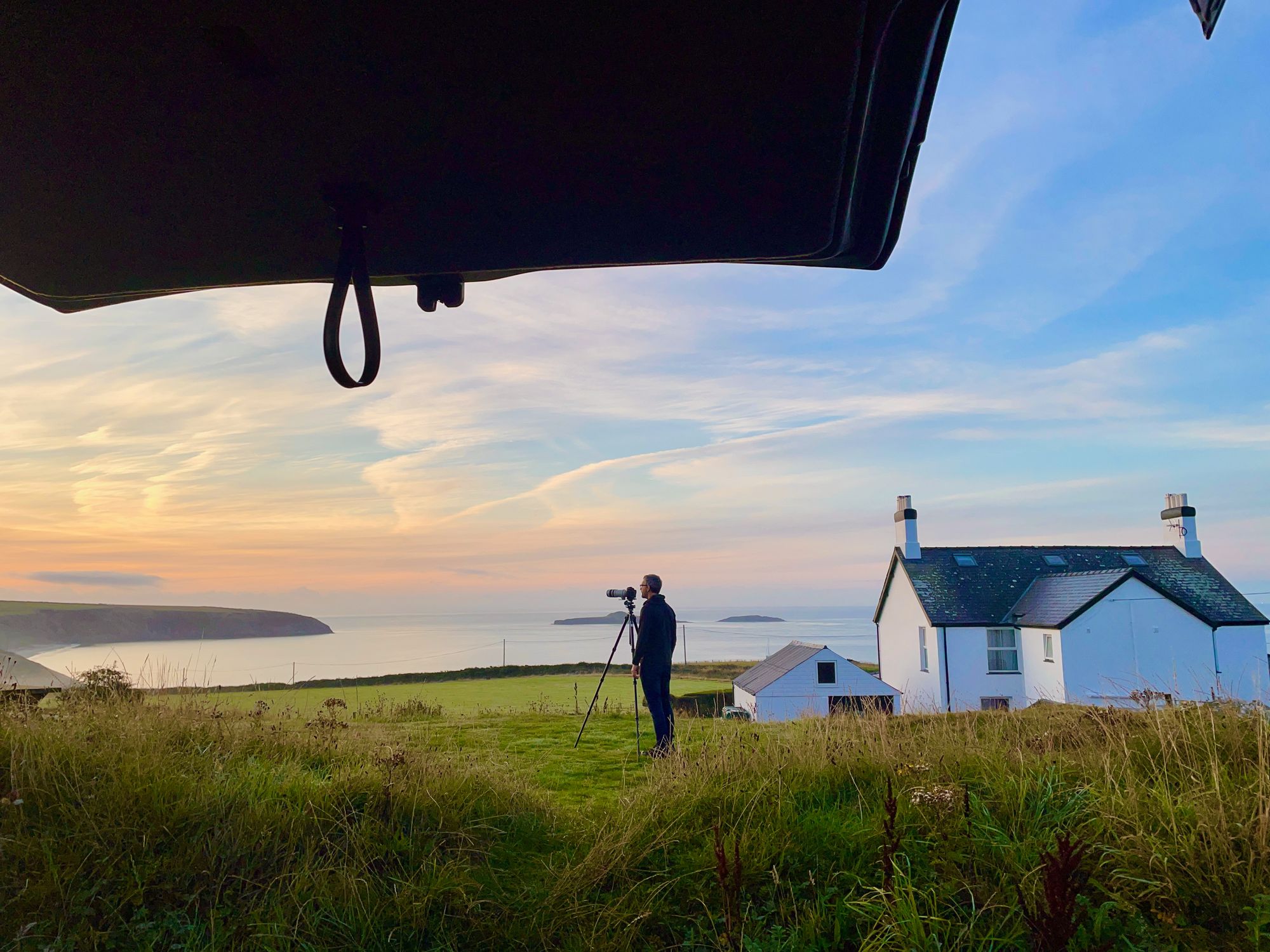
Divine Light: An Illuminated Journey - on WhatsApp
I'm on a camper-van-camino to photograph several cathedrals in April for Janet Gough's forthcoming book Divine Light: The Stained Glass of England's Cathedrals. If you would like to join the burgeoning WhatsApp group for this project drop me a line with your email and I'll send details.

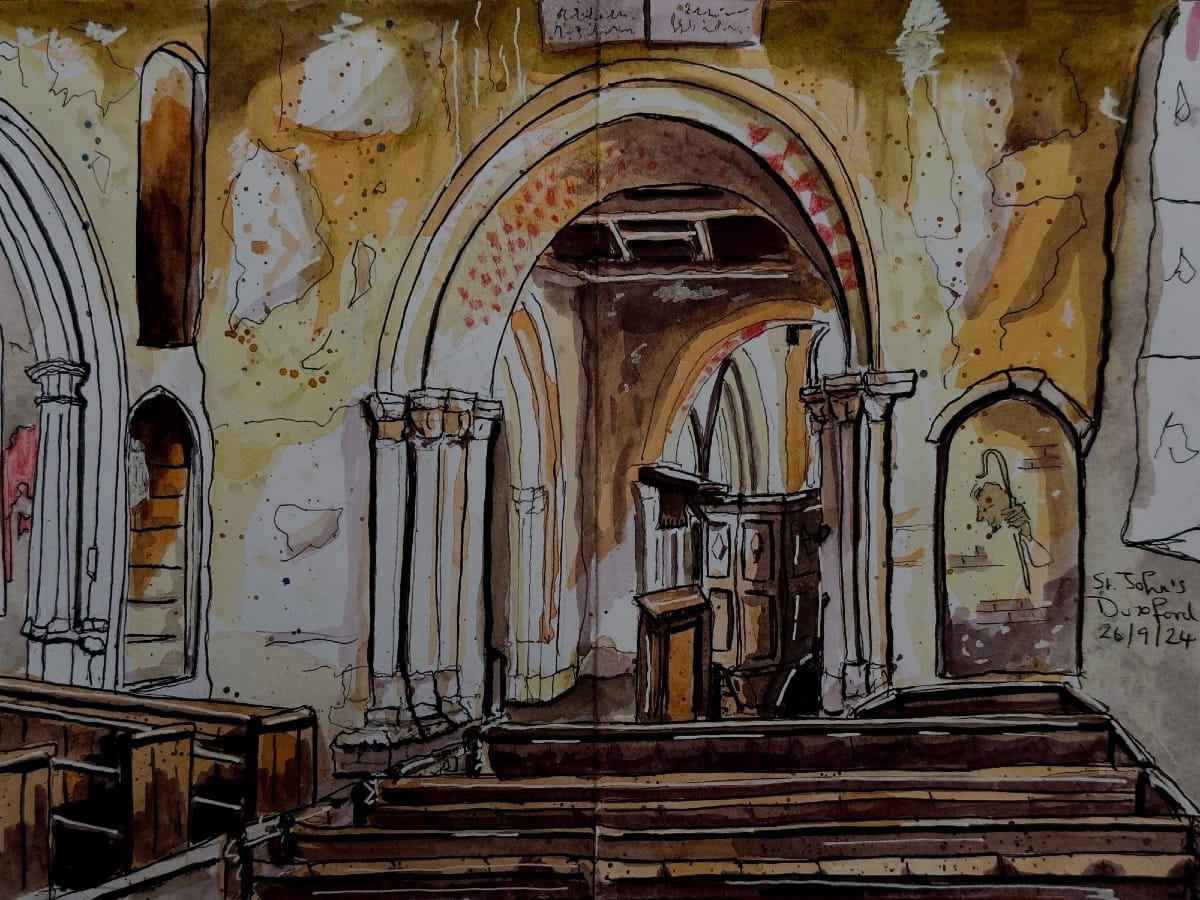
Atelier - My Art Shop
Visit My Art Shop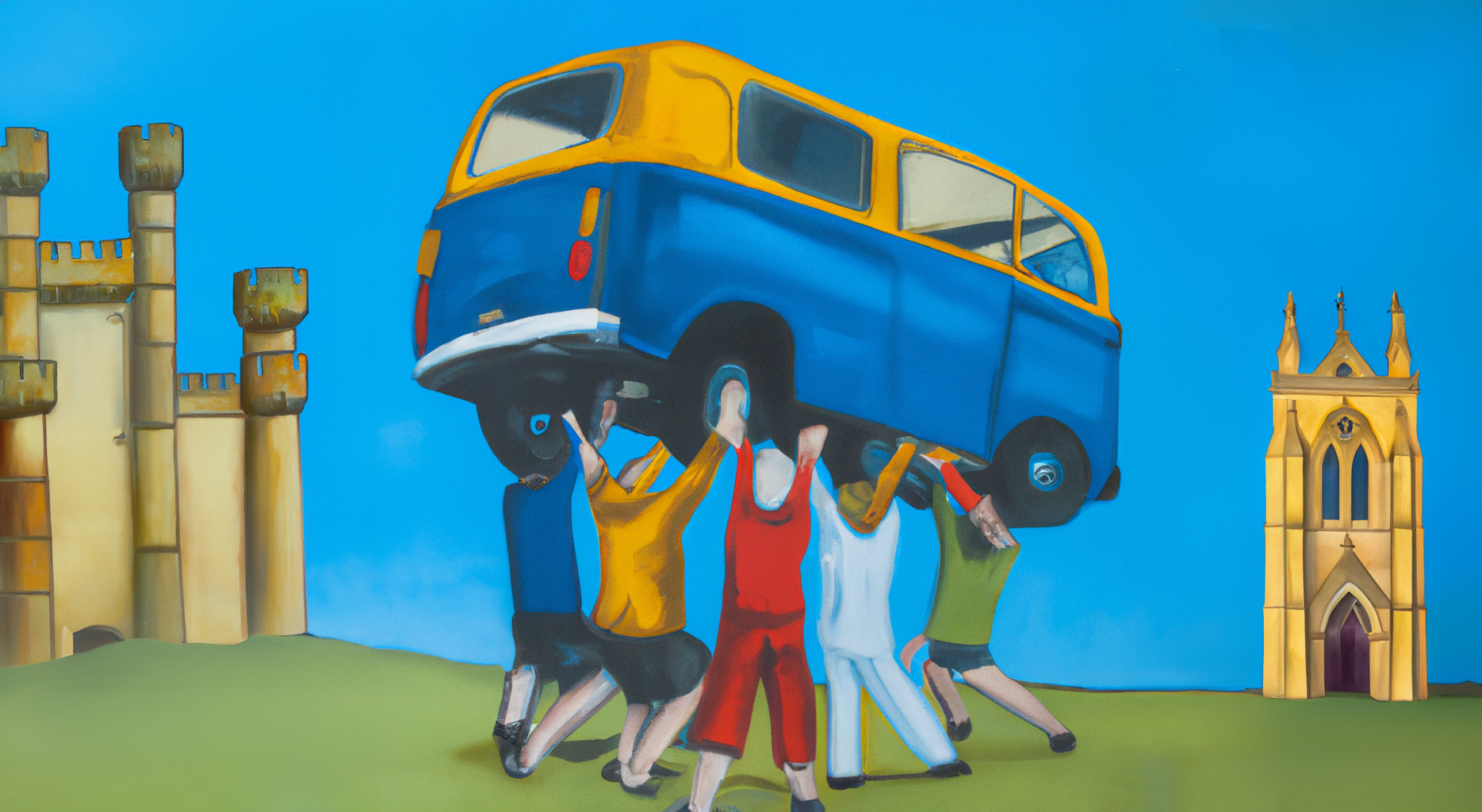
Do you know of a company or firm that might be able to sponsor the digest? Sponsorships are now going towards Member Powered Photography and recorded on the Donations Page.
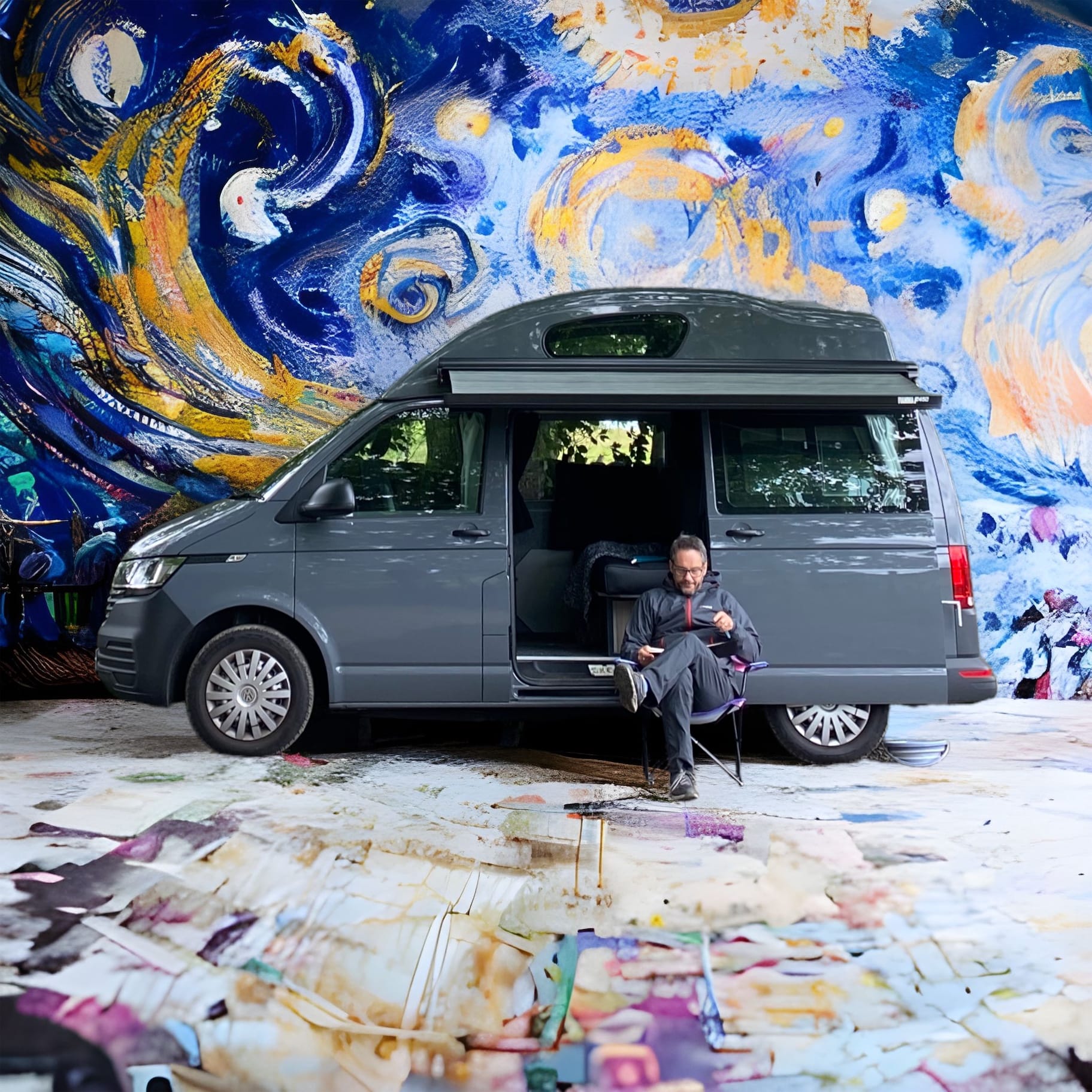
Sponsor a Membership and get your own landing page on the Digest
More information here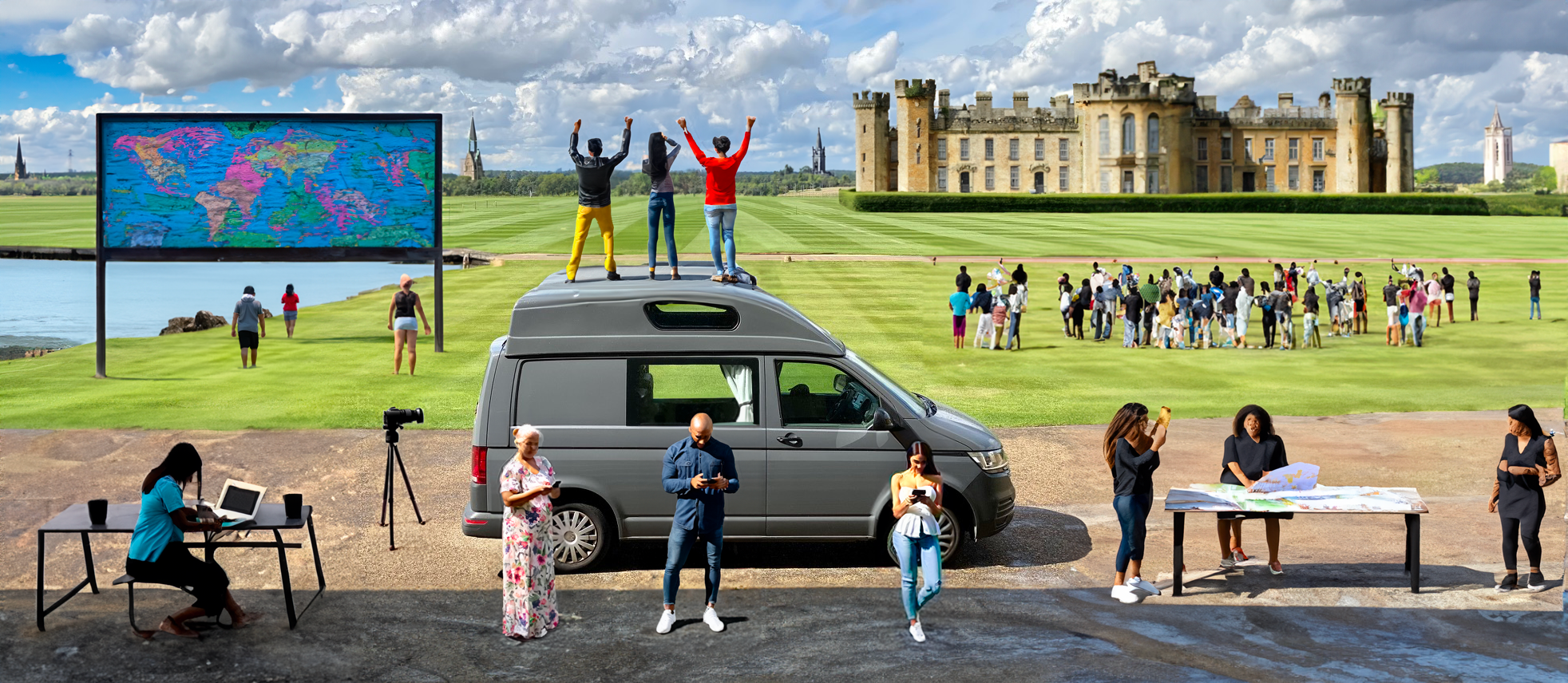
Thank You!
Photographs and words by Andy Marshall (unless otherwise stated). Most photographs are taken with Iphone 14 Pro and DJI Mini 3 Pro.
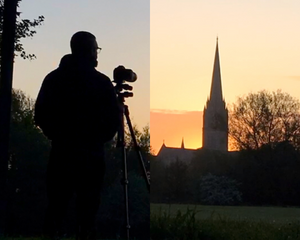
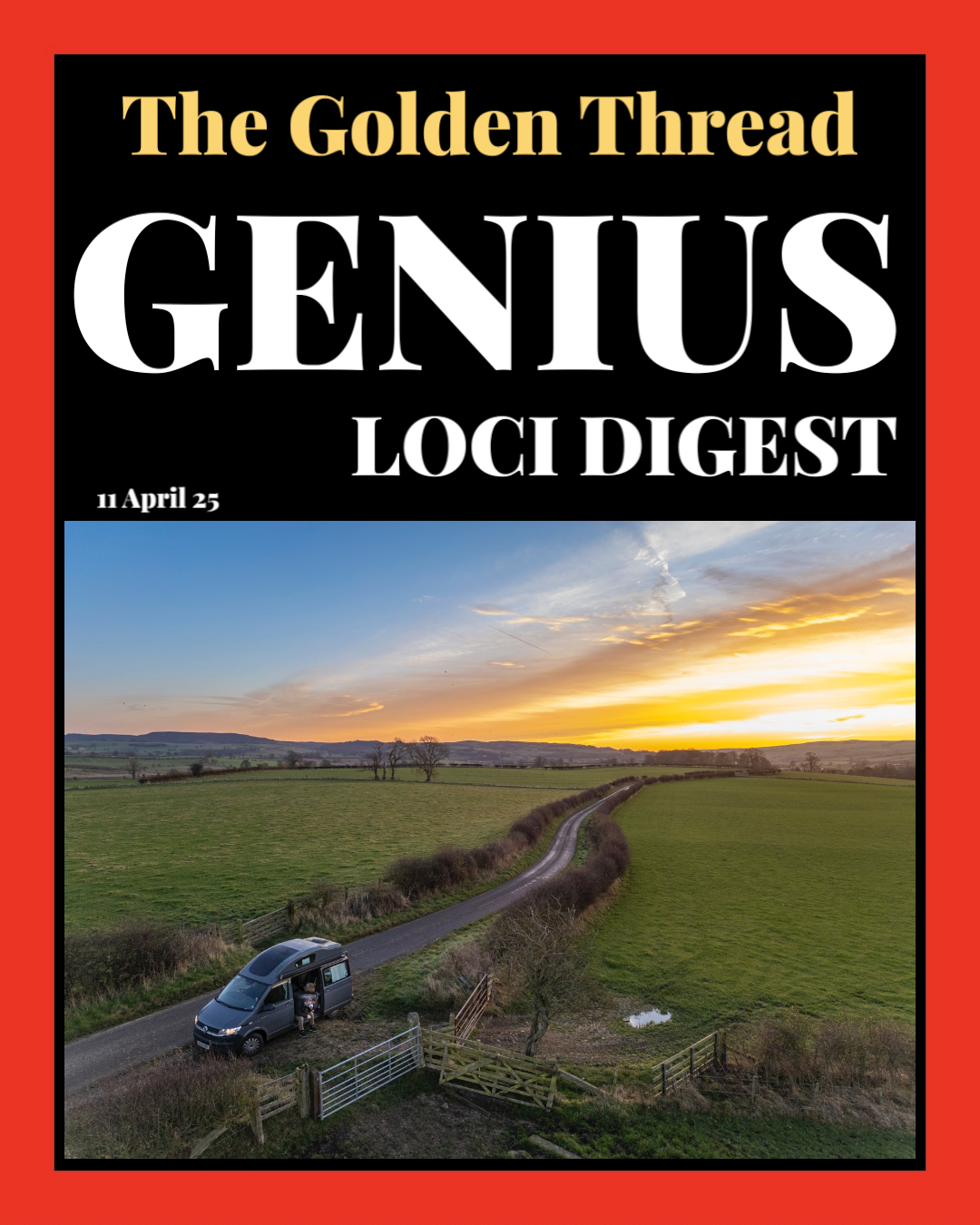

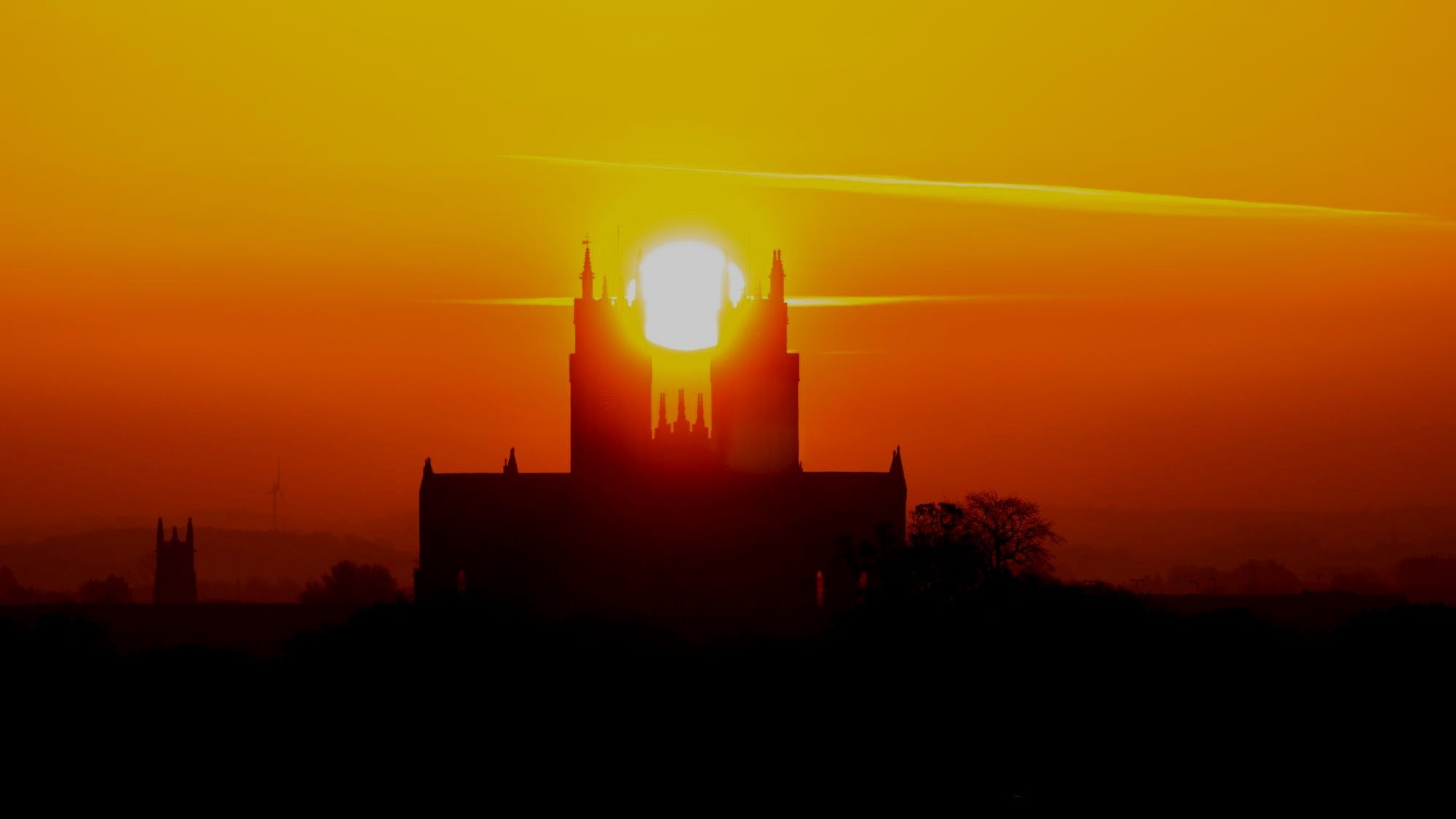


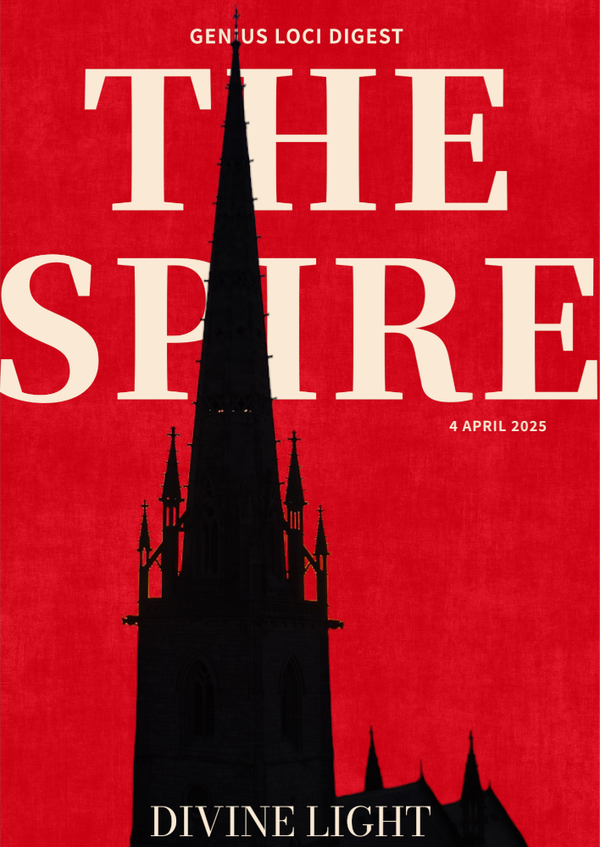
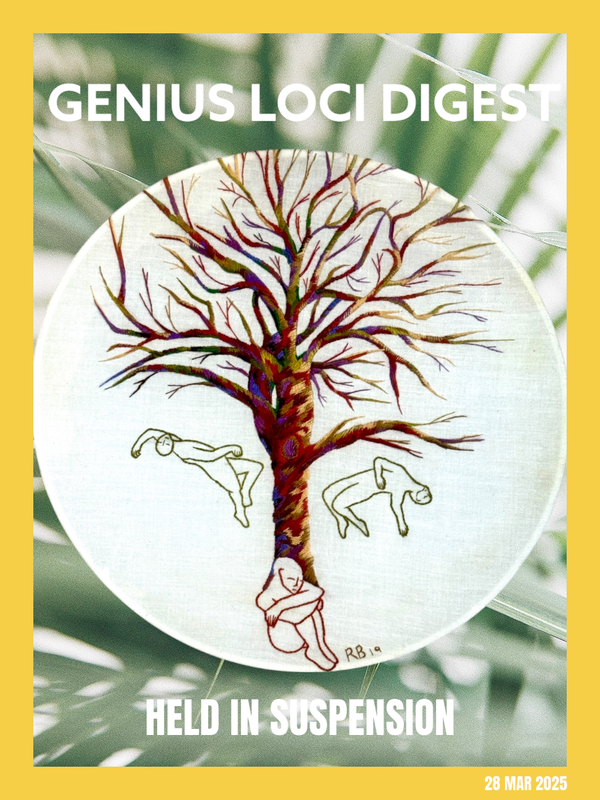

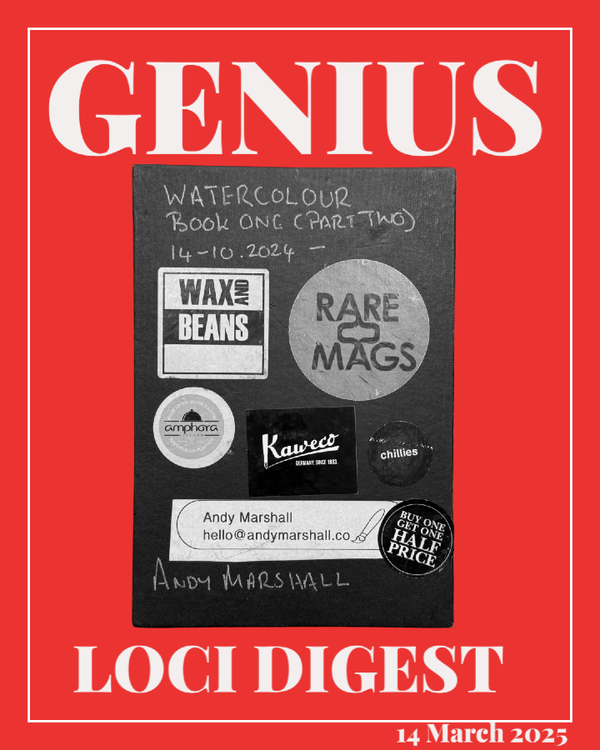
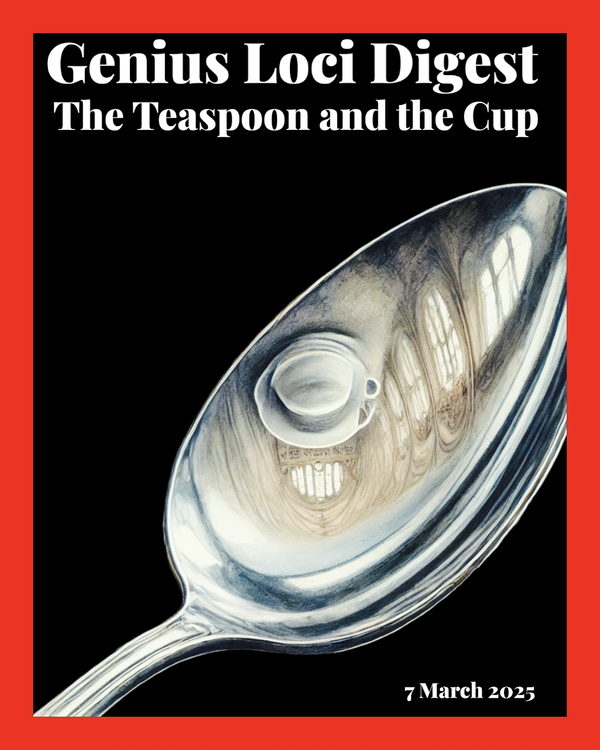
Member discussion